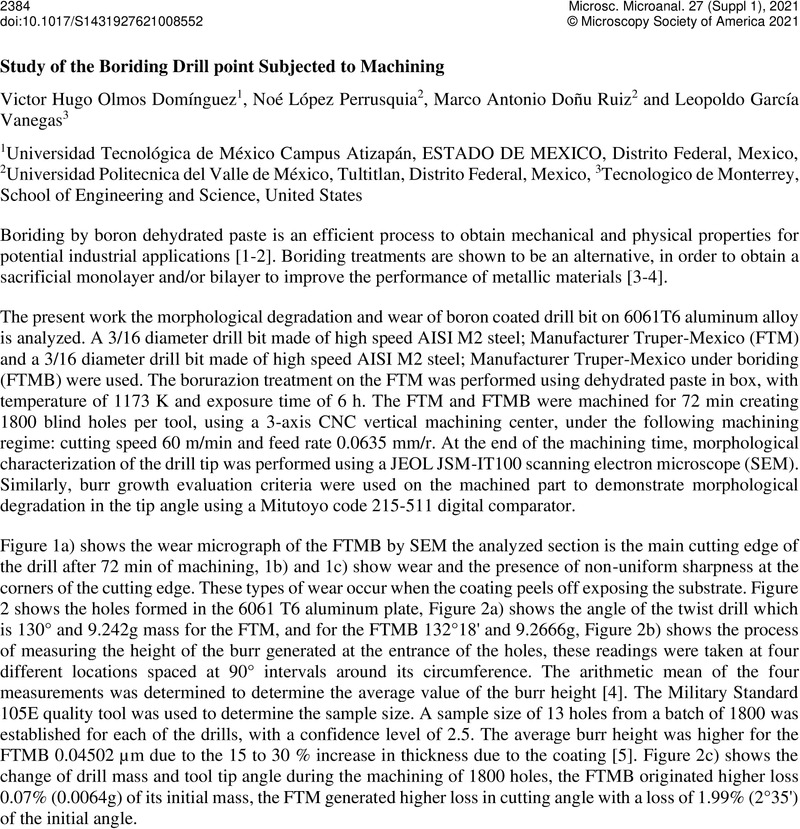No CrossRef data available.
Article contents
Study of the Boriding Drill point Subjected to Machining
Published online by Cambridge University Press: 30 July 2021
Abstract
An abstract is not available for this content so a preview has been provided. As you have access to this content, a full PDF is available via the ‘Save PDF’ action button.

- Type
- Defects in Materials: How We See and Understand Them
- Information
- Copyright
- Copyright © The Author(s), 2021. Published by Cambridge University Press on behalf of the Microscopy Society of America
References
Sánchez Huerta, D., et al. (2017). Growth Kinetics and Mechanical Characterization of a Hard Boron Coating on a Tool Steel. Defect and Diffusion Forum, 380, 29–34.CrossRefGoogle Scholar
López Perrusquia, N. et al. (2017). Characterization and Study Hard Layer on Steels Grade Machinery. Defect and Diffusion Forum, 371, 1–7.CrossRefGoogle Scholar
Campos, I., et al. Evaluation of the tool life and fracture toughness of cutting tools boronized by the paste boriding process, Applied Surface Science,Volume 254, Issue 10 (2008) 2967-2974. doi.org/10.1016/j.apsusc.2007.10.038Google Scholar
Olmos Domínguez, V. et al. (2020). Characterization by Scanning Electron Microscopy on Drill Boride and Drilling Performance of Tool Steels. Microscopy and Microanalysis, 26(S2), 388-390.CrossRefGoogle Scholar
Bu, Y., Liao, W. H., Tian, W., Shen, J.X., & Hu, J. (2016). An analytical model for exit burrs in drilling of aluminum materials. The International Journal of Advanced Manufacturing Technology, 85(9-12), 2783-2796.Google Scholar
Uçak, N., & Çiçek, A. (2018). The effects of cutting conditions on cutting temperature and hole quality in drilling of Inconel 718 using solid carbide drills. Journal of Manufacturing Processes, 31, 662-673.CrossRefGoogle Scholar


